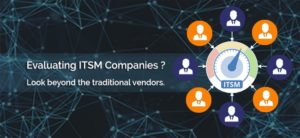For large enterprises, managing their IT infrastructure is a herculean task and I’m not exaggerating when I say that.
We work with customers who have 1000s of servers, appliances, virtual machines spread across 10s of locations which are accessed by millions of users / customers across the globe. The sheer scale and precision required to manage such a disparate infrastructure is a testament in itself.
Customers have invested in various Management tools, each one of them host their own CI a.k.a configuration item data.
CI Data management is one of the biggest hurdles faced by most IT Service Management professionals. As every system application manages its own CI data, it becomes practically impossible to manage it unless you synchronize it with other applications or manage a centralized database.
Thanks to ServiceNow CMDB, we have truly found a single system of action.
ServiceNow CMDB is a single system of record which can maintain all configuration data related to a given infrastructure. It enables IT teams to better manage their infrastructure especially in the areas of business service impact analysis, asset management, and compliance.
Today, we will look at the top three capabilities which really changes the game for IT as well as Business teams.
SINGLE DATA MODEL
ServiceNow CMDB uses a single data model to manage all configuration data. This enables it to standardize taxonomies, processes, and data. As a result of which you need not update configuration changes in multiple systems. ServiceNow CMDB automatically propagates these changes across all related systems, thus enabling a single system of record with minimum redundancy and hassles.
VISUALIZATION AND REPORTING
As I have already emphasized earlier, maintaining a large infrastructure has its challenges. What would help is to graphically visualize the impact a specific business service may have on the subsequent tenants. ServiceNow CMDB does just that.
Its service mapping functionality provides a concise graphical view of your IT infrastructure with relationships, dependencies and more. You can filter data based on a specific CI in mind to understand the impact on in-flight processes such as change requests, incidents, and problem reports.
The CMDB also has a powerful reporting engine which enables users to generate dashboards and reports to be distributed on a regular basis. Each and every data element can be queried to generate beautiful reports which provide insights on your infrastructure in the form you want.

ONE PLATFORM
The CMDB natively integrates with other ServiceNow applications like IT Service Management, Customer Service Management, Discovery, Service Mapping, Event Management, Orchestration etc. This provides each module to be service aware of the other’s availability, relationships, and performance.
The SLA engine provides you with the tools to measure service levels against the agreement you may have with your internal and external customers & vendors.
CLOSING THOUGHTS
With CMDB, ServiceNow has done what it does best – Redefine efficiencies. This ITSM/ITOM enabler helps businesses to optimize their IT environment to ultimately make smarter decisions.
At Serviceberry, wherever we have deployed ServiceNow’s CMDB, we have found almost instant tangible efficiencies in our client’s IT workforce. Greater visibility of IT Infrastructure means organizations can shift their focus to other areas of their business operations.
So, give it a try and let us know when you do! We would love to hear your thoughts in the comments section below.
Looking for a detailed walkthrough of ServiceNow CMDB?




